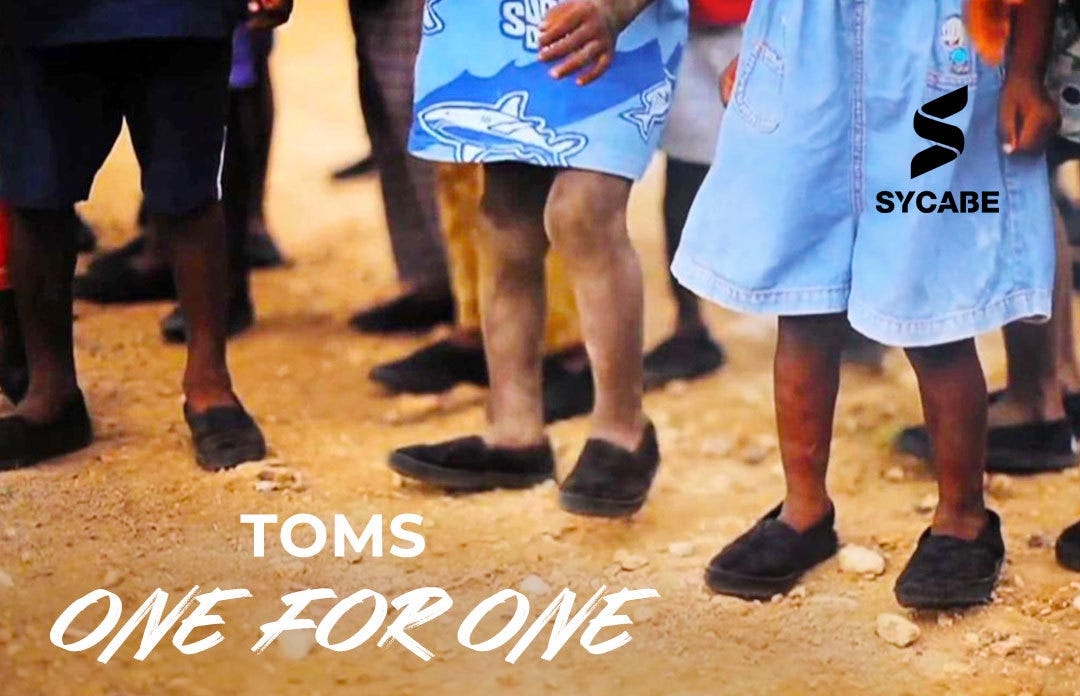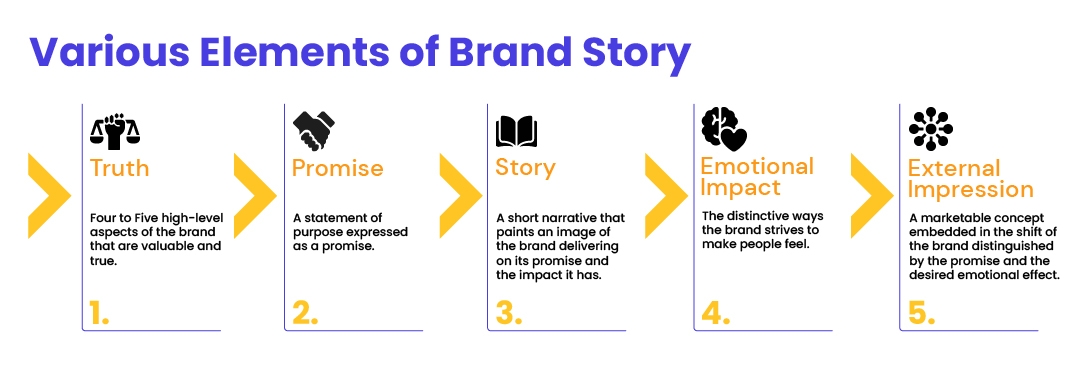The Power of Storytelling in Marketing and Branding
In the vast landscape of marketing and branding, the age-old art of storytelling has emerged as a powerful tool. As businesses navigate the digital realm and compete for attention, the ability to craft and share compelling narratives has become integral to capturing the hearts and minds of consumers. Let's unravel the significance of storytelling in marketing, exploring its impact, and understanding how businesses can leverage this potent strategy.

Introduction: The Art of Connecting Through Stories
In a world saturated with advertisements and information, storytelling serves as a beacon that cuts through the noise. It's a fundamental aspect of human communication, deeply rooted in our history and culture. When seamlessly integrated into marketing and branding efforts, storytelling transforms messages into experiences, forging authentic connections between brands and consumers.
The Impact of Storytelling: Why It Matters
Emotional Resonance:
Stories have a unique ability to evoke emotions. Whether it's joy, empathy, or nostalgia, emotions create memorable experiences. By tapping into these emotional reservoirs, brands can leave a lasting imprint on their audience.
Nike's "Just Do It" campaign doesn't just sell athletic wear; it narrates stories of triumph, perseverance, and the indomitable human spirit.

Creating Emotional Connection:
Nike's "Just Do It" campaign is a masterclass in creating emotional connections. The brand doesn't merely showcase athletic products; it weaves narratives that evoke powerful emotions associated with human determination, achievement, and resilience. The audience isn't just buying sportswear; they're investing in the emotions and values the brand represents.
Triumph Over Adversity:
The campaign often features stories of individuals overcoming significant challenges. Whether it's an underdog athlete or a person facing personal obstacles, Nike positions its products as more than accessories; they become symbolic tools for triumph over adversity. This narrative resonates with the universal human experience of facing challenges and emerging victorious.
Perseverance and Grit:
Nike's storytelling emphasizes qualities like perseverance and grit. Through narratives of athletes pushing their limits and overcoming obstacles, the brand communicates a broader message about the values it stands for. The emotional impact lies in the audience seeing themselves in these stories, feeling inspired to embrace their challenges with determination.
Tapping into Aspirations:
The emotional resonance is amplified by tapping into the aspirations of the audience. Nike doesn't just sell products; it sells the idea of a lifestyle characterized by fitness, excellence, and the pursuit of one's dreams. This taps into the audience's desire for self-improvement and achievement, creating a powerful emotional bond.
Indomitable Human Spirit:
At the core of Nike's storytelling is the celebration of the indomitable human spirit. The brand aligns itself with the essence of pushing boundaries, defying limits, and embracing the relentless pursuit of greatness. This narrative choice resonates universally, making Nike a symbol not just of sportswear but of the human spirit's unconquerable nature.
Impact on the Audience:
Nike's "Just Do It" campaign, through its emotionally resonant storytelling, has transformed the brand into a cultural phenomenon. Consumers don't just buy Nike products; they associate themselves with a brand that inspires, motivates, and aligns with their personal journey. The emotional resonance ensures that the brand occupies a unique and cherished space in the hearts of its audience.
In essence, emotional resonance in storytelling is about creating narratives that go beyond the transactional nature of commerce. Nike's ability to tell stories that touch the core of human emotions exemplifies the transformative power of emotional resonance in branding. It's a reminder that, at its essence, storytelling is a deeply human experience that transcends products, making brands companions in the journey of life.
Building Identity and Trust:
A well-crafted brand story goes beyond products or services; it shapes the identity of a brand. It communicates values, missions, and the ethos that defines the brand's existence. This transparency fosters trust and loyalty among consumers.
Patagonia's commitment to environmental sustainability is embedded in its brand story. This resonates with consumers who prioritize eco-conscious choices.

Shaping Brand Identity:
Brand identity is more than just a logo or a tagline; it encompasses the values, culture, and purpose that define a brand. A compelling brand story, like the one crafted by Patagonia, serves as the cornerstone for shaping this identity. Patagonia's brand story revolves around environmental sustainability, responsible sourcing, and a commitment to making a positive impact. Through storytelling, Patagonia communicates not just what it sells but who it is as a brand.
Communicating Values and Missions:
The brand story becomes a vehicle for communicating the values and missions that guide the brand's decisions. In Patagonia's case, the story isn't just about selling outdoor apparel; it's about advocating for and embodying environmental stewardship. This transparency in communicating values helps consumers align their purchasing choices with brands that share their beliefs.
Ethical and Cultural Ethos:
Trust is built on shared values and ethical practices. Patagonia's commitment to ethical sourcing, fair labor practices, and environmental responsibility becomes an integral part of its brand story. This ethical and cultural ethos resonates with consumers who prioritize conscious consumerism, building a trust-based relationship between the brand and its audience.
Transparency and Authenticity:
A genuine brand story is one that embraces transparency and authenticity. Patagonia doesn't shy away from addressing challenges or sharing its journey toward sustainability. This level of transparency adds authenticity to the brand's narrative, reinforcing trust. Consumers appreciate knowing the 'why' behind the brand's actions, fostering a sense of authenticity that is crucial in today's consumer landscape.
Fostering Loyalty:
The trust established through a well-crafted brand story translates into customer loyalty. Consumers who resonate with Patagonia's environmental ethos not only become repeat customers but also brand advocates. Loyalty is not just transactional; it becomes a commitment to supporting a brand that stands for something beyond profit.
Impact on Consumers:
For consumers, the brand story becomes a decision-making factor. Patagonia's brand story isn't just a narrative; it's a call to action. Consumers who prioritize sustainability and ethical practices are drawn to the brand not only for its quality products but for the shared values. The brand story, in this context, becomes a bridge connecting consumers with a community that values the same principles.
In conclusion, building identity and trust through a brand story is about more than creating a narrative; it's about establishing a genuine connection with consumers. Patagonia's success in weaving its environmental commitment into its brand story showcases how authenticity, transparency, and shared values can elevate a brand from being a mere commodity to a trusted companion in the consumer's journey.

Memorability and Differentiation:
Stories stick in our minds far more effectively than facts or figures. A compelling narrative helps a brand stand out in a crowded market. It creates a unique identity that consumers can remember and relate to.
Apple's origin story, from a garage in Cupertino to a global tech giant, is integral to its brand. It sets Apple apart as a company driven by innovation and disruption.
Creating a Lasting Impression:
Human brains are wired to remember stories better than raw data. Apple's origin story, starting in a garage and evolving into a global tech giant, is a narrative that has become iconic. This story is not just a historical account; it's a powerful tool for creating a lasting impression in the minds of consumers. The journey from humble beginnings to technological innovation becomes a memorable storyline that consumers associate with Apple.
Emotional Connection:
Apple's story taps into emotions, creating a connection beyond the products themselves. The narrative of two friends, Steve Jobs and Steve Wozniak, starting a revolution in personal computing resonates emotionally. This emotional connection enhances memorability. When consumers think of Apple, they don't just think of devices; they recall the story of a company that changed the tech landscape.
Unique Identity in a Crowded Market:
The tech industry is highly competitive and saturated. Apple's story serves as a beacon of differentiation. Amidst a sea of tech companies, Apple stands out as a brand with a unique identity forged through its narrative. The garage-to-giant storyline communicates that Apple isn't just another tech company; it's a disruptor, an innovator, and a company with a rich history.
Humanizing the Brand:
Stories humanize brands. Apple's story, with its relatable beginning, humanizes the brand. It transforms Apple from a faceless corporation into a journey led by individuals with a vision. This human element resonates with consumers, making the brand more approachable and relatable. It's not just about the products; it's about the people behind the innovation.
Setting a Benchmark for Innovation:
Apple's narrative sets a benchmark for innovation. The story is not static; it's a dynamic script that continues with each new product launch. Consumers anticipate the next chapter in Apple's story, associating the brand with a commitment to pushing boundaries. This anticipation and association further contribute to Apple's memorability in the market.
Impact on Consumer Perception:
The memorability and differentiation achieved through Apple's brand story influence consumer perception. When consumers encounter a new Apple product, they don't just see it as a standalone item; they see it as a continuation of a narrative they've been following. This perception, built on a memorable story, shapes how consumers view and interact with the brand.
In conclusion, memorability and differentiation are essential elements in a brand's success, especially in a competitive market. Apple's ability to craft a memorable narrative has contributed significantly to its distinct identity and ongoing success in the tech industry. This example showcases how storytelling can be a powerful tool for brands looking to leave a lasting impact on consumers.

Driving Action:
Stories have the power to inspire action. Whether it's making a purchase, sharing content, or participating in a brand's journey, a well-told story motivates consumers to become active participants rather than passive observers.
TOMS Shoes' narrative of "One for One" creates a call to action, compelling consumers to make a purchase that contributes to a social cause.

Inspiring Purposeful Purchases:
TOMS Shoes has mastered the art of using storytelling to drive action, especially in the form of purposeful purchases. The brand's "One for One" narrative is a compelling story that goes beyond selling footwear. It communicates a purpose — for every pair of shoes purchased, TOMS pledges to donate a pair to a child in need. This narrative transforms the act of buying shoes into a meaningful and impactful action. Consumers aren't just making a transaction; they are participating in a mission to make a positive difference.
Creating a Call to Action:
The "One for One" story serves as a powerful call to action. It's not just a tagline; it's an invitation for consumers to be part of something more significant. By purchasing TOMS shoes, consumers are actively contributing to a social cause. This call to action is embedded in the brand's narrative, creating a sense of purpose and shared responsibility. Consumers become motivated to take action, knowing that their purchase is linked to a larger, altruistic mission.
Transforming Consumers into Participants:
TOMS' storytelling strategy transforms consumers from passive observers to active participants. The narrative invites individuals to join the brand on a journey of social impact. Consumers, through their purchases, become integral to the brand's mission. This transformation is a testament to the effectiveness of a narrative that resonates beyond the product itself. It's not just about buying shoes; it's about being part of a movement.
Emotional Connection to Action:
The emotional resonance in TOMS' story is a key driver of action. The narrative taps into the empathy and compassion of consumers, connecting the act of purchasing with a positive emotional experience. This emotional connection becomes a catalyst for action. Consumers, moved by the story of giving, are more likely to take the step of making a purchase, knowing that it aligns with their values and contributes to a larger social good.
Fostering Brand Loyalty:
The action-driven narrative of TOMS contributes to brand loyalty. Consumers who participate in the brand's mission through their purchases develop a sense of loyalty and attachment. They aren't just customers; they are advocates of a cause. This loyalty extends beyond the product lifespan, as consumers continue to support a brand that has successfully engaged them in a story that goes beyond commerce.
Impact on Consumer Behavior:
The storytelling approach of TOMS has a profound impact on consumer behavior. It influences not only the decision to make a purchase but also the ongoing relationship consumers have with the brand. By aligning the narrative with a call to action, TOMS has created a unique space where consumer choices are intertwined with a sense of purpose and social responsibility.
In conclusion, driving action through storytelling is about creating narratives that inspire, engage, and motivate consumers to actively participate in a brand's journey. TOMS Shoes exemplifies how a compelling story can be a catalyst for purposeful consumer actions, demonstrating that commerce can coexist with a meaningful mission.
Crafting Effective Brand Stories: The Elements
Authenticity:
Authenticity in storytelling is about being true to the brand's identity and values. When a brand shares an authentic story, it builds trust with consumers. Authenticity communicates that the brand is transparent, genuine, and committed to its narrative. This trust, once established, contributes to long-term credibility in the eyes of the audience.
Relatability:
Relatable stories are rooted in a deep understanding of the target audience. Brands need to comprehend the values, aspirations, and challenges of their consumers. When a story reflects the experiences and desires of the audience, it becomes relatable. This understanding allows brands to tailor their narratives to resonate with specific demographics and psychographics.
Conflict and Resolution:
Conflict and resolution add dynamism to a brand story. The conflict represents a challenge or obstacle, while the resolution showcases how the brand overcame it. This narrative structure creates tension and engagement, keeping the audience invested in the story. Brands can use conflicts to highlight their problem-solving capabilities and resilience.
Consistency Across Channels:
Consistency across channels is crucial for maintaining a unified brand image. A brand story should be seamlessly integrated into various touchpoints, reinforcing the same core message. Whether it's a social media post, an email campaign, or website content, consistency ensures that consumers receive a cohesive and coherent narrative.

Conclusion
In the ever-evolving landscape of marketing and branding, the power of storytelling remains timeless. As businesses navigate the digital age, weaving narratives that captivate, inspire, and resonate has become not just a strategy but a necessity. The art of storytelling holds the potential to transform brands from mere entities into storytellers that connect with their audience on a profound level. Through narratives that unfold with authenticity and purpose, brands can etch their stories into the hearts of consumers, creating a narrative that endures and evolves. The journey of storytelling is a perpetual one, with each chapter presenting new opportunities to engage, inspire, and leave an indelible mark in the minds of those who listen.







.png)










